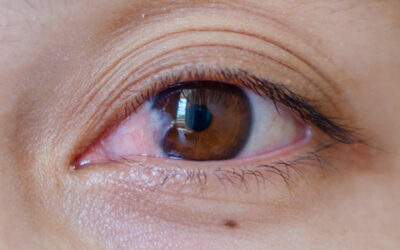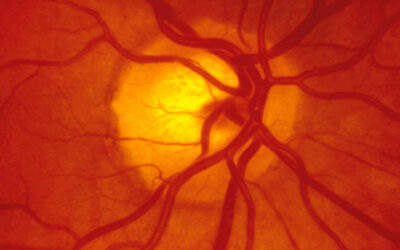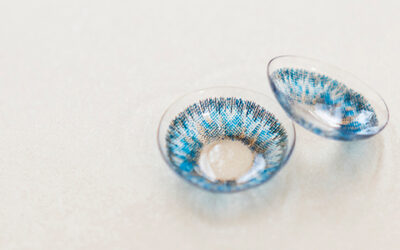Will Pink Eye Go Away By Itself?

Waking up in the morning to itchy, swollen, or even crusty eyes isn’t an ideal start to the day, but it’s a reality that many Australians wake up to, with pink eye being the most common cause of eye infections across the country.[1]
Pink eye is medically known as conjunctivitis, getting its nickname from one of its symptoms that causes the whites of the eyes to take on a pink or red colour. While it is well known in schools due to its contagious nature in many cases, a common enquiry we receive is about what to do for pink eye once it has developed: will it go away by itself, or should you seek help?
Here’s a closer look into pink eye, and what you need to know about treating it from our optical team.
What Is Pink Eye?
To understand what to do about conjunctivitis, it’s important to understand a little more about what it is. Conjunctivitis is the inflammation of the thin tissue layer called the conjunctiva. The conjunctiva is a clear membrane that covers the white part of your eyeball (the sclera), as well as the inside of your upper and lower eyelid. It works to help keep your eyelid and eyeball moist while protecting the sclera and helping prevent microbes from entering the eye.
There are many small blood vessels in the conjunctiva, and when they become inflamed, this is what produces the pinkness in the eyes. The most common causes of conjunctivitis are viruses, bacteria, and allergens entering the eye, but other causes may include wearing contact lenses, air pollution, fungi, parasites, or simply having something small such as an eyelash stuck in the eye.
In many cases, it can be difficult to tell what the exact cause of the conjunctivitis is, because the symptoms may seem the same no matter the cause. This is where seeing an eye care specialist can play an important role in diagnosing the cause so the right treatment steps can be taken.
Symptoms of conjunctivitis may include:[2]
- Pink or red colour in the white of one or both eyes
- Swelling around the eyelids
- Increased tear production
- Feeling like something is stuck in your eye, or feeling a need to rub your eye
- Itching, irritation, or burning
- Discharge (pus or mucus) or watering
- Crusting of eyelids or lashes, especially in the morning
- Contact lenses that feel uncomfortable or do not stay in place on the eye
- Blurry Vision
- Light Sensitivity
Will Conjunctivitis Go Away By Itself?
The short answer is that it depends on what type of conjunctivitis you have. There are three main types of conjunctivitis that we see in our clinics:
Viral Conjunctivitis
Viral conjunctivitis is a highly contagious infection caused by a virus, and it is the most common cause of infectious conjunctivitis.[3],[4] You may have viral conjunctivitis if:
- You also have a cold, flu, or respiratory infection
- The discharge from your eye is watery rather than thick
- It begins in one eye and spreads to the other day within a few days
Will it go away by itself?
Most cases of viral conjunctivitis are mild. The infection will usually clear up in 7 days without treatment and without any long-term consequences.
In some cases, viral conjunctivitis can take longer to resolve. Experts recommend making an appointment with an optometrist if your symptoms do not resolve after 7 to 10 days, to reduce your risk of complications.[5]
There is no single effective treatment for viral conjunctivitis; but artificial tears, antihistamine eye drops, and cold compresses can provide some relief at home.[6],[7]
Antibiotics cannot be used for viral conjunctivitis,[8] but your optometrist can prescribe antiviral medication to treat more serious cases, such as conjunctivitis caused by the herpes simplex or varicella-zoster virus.
Bacterial Conjunctivitis
Bacterial conjunctivitis is an infection caused by bacteria. It can spread easily and is more common in children than in adults.[9] You may have bacterial conjunctivitis if:
- You also have an ear infection
- The discharge from your eye is thick rather than watery
- Your eyelids are itchy and sticking together – as many as 90% of people with bacterial conjunctivitis have sticky eyelids and itchy eyes[10]
- Your baby may have bacterial conjunctivitis if the symptoms appear shortly after birth
Will it go away by itself?
In more than 60% of cases, the body tends to cure bacterial conjunctivitis without medical intervention within one to two weeks,[11] and serious complications are very rare[12].
However, in some cases an optometrist may need to prescribe antibiotic eye drops or ointments, to help shorten the length of your infection, reduce complications, and reduce the spread to others. We recommend that you book an appointment with us, to ascertain the cause of infection, rule out an ingrown eyelash of loose eyelash in the eye, scratch on the cornea or other cause. We can suggest the most appropriate treatment and/ or symptomatic relief.
Allergic Conjunctivitis
Allergic conjunctivitis is an allergic reaction to irritants such as pollen from trees, plants, and grasses, as well as from weeds, dust mites, moulds, pets, medicines, or even makeup. It isn’t contagious, and is very common, affecting up to one in every five people.[13] You may have allergic conjunctivitis if:
- Your eyes are incredibly itchy, red, teary, and/or swollen[14]
- You have other allergy symptoms, such as an itchy nose, sneezing, eczema, or asthma
- You’re most affected in the spring and summer when pollen counts are high
- Both of your eyes are affected
Will it go away by itself?
Allergic conjunctivitis usually gets better when you simply remove the allergen from your environment.[15] Allergy medications and antihistamine eye drops can also provide relief from intense itching and tearing, and your optometrist may also recommend lubricating eye drops or mast cell stabilisers.[16],[17]

When Do I Need To See An Optometrist?
We recommend you come in as soon as possible for an accurate diagnosis.
You should book an appointment to have an examination with a qualified optometrist if you have conjunctivitis along with any of the following:
- Pain in the affected eye
- Sensitivity to light or blurred vision that does not improve when you wipe any discharge away from your eye
- Intense redness in the affected eye
- Symptoms that get worse or don’t improve
- You’re concerned about suspected bacterial conjunctivitis spreading to others in your household
- You’re worried about complications from the infection
- A weakened immune system, from HIV, cancer treatments, or other medical conditions or treatments
Newborns with symptoms of conjunctivitis such as puffy or red eyelids should be seen by an optometrist as soon as possible. In newborn babies up to 28 days old, conjunctivitis caused by an infection can lead to a severe eye infection incredibly quickly.
Complications are rare and most babies make a full recovery, however, if conjunctivitis isn’t treated promptly, it can cause permanent damage to a newborn’s vision. Optometrists will normally treat conjunctivitis with antibiotics, and monitor the baby’s eye health and recovery closely.
Don’t Leave Your Eyes To Chance: Get A Correct Diagnosis From An Optometrist
While many cases of conjunctivitis resolve without complications, if you’re concerned, then book in with one of our qualified optometrists.
Your optometrist will complete a comprehensive examination of your eye, rule out other conditions that share similar symptoms to conjunctivitis, confirm your diagnosis and its cause, and help you with the right treatment for a speedy recovery.
Red-eye symptoms can also be caused by conditions such as styes, iritis, chalazion (inflammation of the gland along the eyelid), or blepharitis (an inflammation or infection of the skin along the eyelid), so getting formally diagnosed can provide peace of mind that you’re on the best track with your treatment.
Book your appointment with one of our experienced optometrists today. Click here.
[1] https://www.nps.org.au/australian-prescriber/articles/common-eye-infections
[2] https://www.cdc.gov/conjunctivitis/about/symptoms.html
[3] https://www.ncbi.nlm.nih.gov/pubmed/7049134
[4] https://www.ncbi.nlm.nih.gov/pubmed/2797725
[5] https://www.ncbi.nlm.nih.gov/pubmed/10922425
[6] https://www.ncbi.nlm.nih.gov/pubmed/30366797
[7] https://www.ncbi.nlm.nih.gov/pubmed/1928271
[8] https://www.ncbi.nlm.nih.gov/pubmed/20082509
[9] https://www.ncbi.nlm.nih.gov/pubmed/22348418
[10] https://www.ncbi.nlm.nih.gov/pubmed/8333258
[11] https://www.ncbi.nlm.nih.gov/pubmed/15993231
[12] https://www.ncbi.nlm.nih.gov/pubmed/12605210
[13] https://www.ncbi.nlm.nih.gov/pubmed/25000933
[14] https://www.ncbi.nlm.nih.gov/pubmed/21822130
[15] https://www.ncbi.nlm.nih.gov/pmc/articles/PMC7431717/
[16] https://www.ncbi.nlm.nih.gov/pubmed/12472429
[17] https://www.ncbi.nlm.nih.gov/pubmed/27050351




